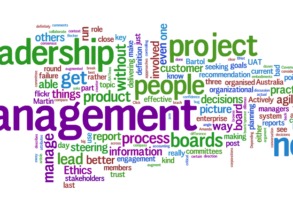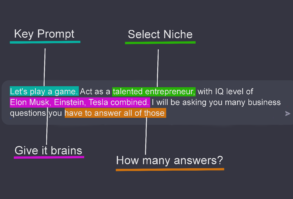
Have you ever looked at a pile of business books and felt a wave of overwhelm? I’ve been there. So much knowledge waiting to be discovered, yet without a clear plan, it’s easy to get lost among all the theories, case studies, and graphs. The question I asked myself was: could there be a simpler, more enjoyable way to navigate through these books and genuinely understand their essence?
Let me introduce you to a friendly guide I discovered to smarter reading. I found a straightforward, step-by-step method that not only helps me read but also truly absorb the key insights from my business books. This method isn’t about rushing through the pages, but about making each word count. Now, every book I read becomes a useful tool in my knowledge arsenal, ready to help me tackle real-world challenges.
I now see my bookshelf as a gold mine, filled with valuable nuggets of wisdom. This method has become my treasure map and mining gear, guiding me to uncover the most valuable insights from each book. It’s taught me how to read with a clear purpose, grasp the core concepts, and recall them exactly when I need to.
Are you ready to transform your reading process? If the idea of turning your ‘to-read’ pile into a powerhouse of knowledge excites you, join me on this journey. Let’s make reading less of a task and more of an adventure of discovery!
1) Learn topics with advanced framework
1. Solve complex problems or understand topics using the following frameworks:
First Principles Thinking Framework: I am having difficulty learning [insert topic]. Help me understand it better by using First Principles Thinking.
Feynman Technique: I’m struggling to grasp [insert topic]. Guide me through understanding it using the Feynman Technique by breaking it down into simple terms and analogies.
- Best used when you need to learn or explain a complex concept in simple terms.
- Helps break down a topic into smaller, easier-to-understand parts and relate it to familiar ideas using analogies.
- Example: When learning about blockchain technology, the Feynman Technique can help simplify the concept by comparing it to a shared ledger or a transparent record-keeping system.
5 Whys Analysis: I’m facing a challenge with [insert topic]. Help me get to the root cause of the issue by applying the 5 Whys Analysis.
- Applicable in problem-solving scenarios to identify the root cause of an issue by asking “why” repeatedly.
- Useful when dealing with recurring problems or when the surface-level cause is not apparent.
- Example: When facing a high employee turnover rate, the 5 Whys Analysis can help uncover underlying issues like poor management, lack of growth opportunities, or uncompetitive compensation.
Chunking Technique: I find [insert topic] overwhelming. Break it down into smaller, manageable chunks using the Chunking Technique to make it easier for me to understand and remember.
- Applicable when dealing with large, complex topics or tasks that feel overwhelming.
- Involves breaking down the subject into smaller, more manageable parts to make it easier to understand, remember, and tackle.
- Example: When studying for a comprehensive exam, the Chunking Technique can help divide the material into logical sections, making it less daunting and easier to process.
Lateral Thinking: I’m stuck on [insert topic] and need a fresh perspective. Use Lateral Thinking techniques to help me approach the problem from different angles and generate creative solutions.
- Useful when stuck on a problem or in need of creative solutions.
- Encourages approaching the issue from unconventional angles, challenging assumptions, and generating innovative ideas.
- Example: When designing a new product or service, Lateral Thinking can help teams break free from traditional constraints and come up with unique, valuable offerings.
2) Read books Faster with AI
Prompt #1: Please summarize the book [BOOK NAME] by [AUTHOR].
Prompt #2: Please provide a list of all the chapters in the book. For each chapter, include a brief summary (3-4 sentences) that captures the main focus, key topics, and central themes or key learnings addressed in that chapter.
(From here, I’d pick out chapters that provided the best teachings based on what I want to learn}
Prompt #3: In [CHAPTER], what are the most important 20% of learnings about [INSERT LEARNING OBJECTIVE or Business Topic] that will help me understand 80% of it.”
(At this point, we’ve compiled the most important points from the chapter based on what you want to get out of it—no fluff. Now, we’re going to use a scientifically proven method to remember it all.)
Prompt #4: Convert those key lessons from the chapter into engaging stories and metaphors to aid my memorization.
(LLM will split out easy-to-understand stories that make it super simple to remember what you’ve just read.)
Prompt #5: Write me an action list of how I can apply [KEY LESSON] into [PLACE YOU WANT TO APPLY IT]
or
How can I apply learnings from this book in my life: Create a real-life example for me, [write your age, gender, and occupation, relationship] to enhance my quality of life. Write in the first person as if I am writing it and I have found these connections to my life. Write this part in a loose, simpler way with more concise, concrete realizations.
(On this prompt, provide any valuable background knowledge on the current situation or struggles that you’re hoping to improve on in your application area.)
3) You can try this prompt as well:
Prompt #1: Please summarize the book “[BOOK NAME] by [AUTHOR]“.
Prompt #2: Please provide a list of all the chapters in the book. For each chapter, include a brief summary (3-4 sentences) that captures the main focus, key topics, and central themes or key learnings addressed in that chapter.
(Alternatively, if you’re not sure about your focus areas, you could start with a general approach and refine your focus as you progress through the books. In that case, the prompt could be: Prompt 2: Identify key chapters or sections in the book that contain fundamental concepts or are generally considered important in the field of business.)
Prompt #3: Based on the chapter summaries, which chapters seem most relevant to [SPECIFIC BUSINESS TOPIC OR CHALLENGE]? Please identify the top 2-3 chapters that appear to offer the most valuable information and insights for an [job title, e.g. entrepreneur] like myself.
Prompt #4: For each of the chapters you identified in the last response, please summarize the key learnings, actionable insights, and practical advice that can help me better understand and address [SPECIFIC BUSINESS TOPIC OR CHALLENGE]. Aim to capture the most important 20% of learnings that will give me 80% of the understanding and value.
Prompt #5: Considering the insights from the chapters you summarized, what are the top 5 takeaways or action items that I, as an [Job Title] or/and owner of [business category], can implement to improve my [Topic Name]?
Prompt #6: Convert these crucial learnings into user-friendly formats like stories, metaphors, and bullet points for better understanding and recall.
Prompt #7: Based on the knowledge of this book, develop a list of actionable steps, strategies, or thought exercises that I can apply in real-world business scenarios.
or
How can I apply learnings from this book in my life: Create a real-life example for me, [write your age, gender, and occupation, relationship] to enhance my quality of life. Write in the first person as if I am writing it and I have found these connections to my life. Write this part in a loose, simpler way with more concise, concrete realizations.
Prompt 8 (Optional): Write 5-10 short takeaways that I can directly share with my friends and family to make them smarter.
Prompt 9 (Optional): Quotable Quotes: Include 3-5 memorable or impactful quotes from the book, along with brief explanations of their significance.
Prompt 10 (Optional): Create a numbered quiz with multiple choice or open-ended questions for the topic you taught earlier, and put options for each question labeled a), b), c), etc, and an “Answers” section below the questions that refers to each question number and provides the correct answer along with an explanation relating it back to the concepts taught in order to assess my understanding, identify areas needing clarification, and reinforce the key learnings.
Prompt 11 (Optional): Suggest additional resources or readings that complement or deepen the insights gained from each book.
Remember to take breaks and reflect on what you’ve learned after each book. This systematic approach aims to improve your comprehension, retention, and application of the valuable knowledge these books offer.
Hope this helps. This definitely does not apply to reading for pleasure, but if you’re reading for personal growth or with an objective in mind, this is an amazing prompt sequence. I can’t recommend it enough.
You can join the Telegram Study Group for “Personal MBA” to download all the books and future updates – https://t.me/pmbabookclub
Curated PROMPT Collections: Ignite Your Learning Journey
- FlowGPT – A rich source of prompts that cater to a variety of learning objectives.
- PromtBase – A collection dedicated to optimizing your interactions with ChatGPT.
- PromptsHub – A hub for a wide range of prompts to choose from.
- Sam Szuchan Prompt Ideas – Creative prompt ideas curated by Sam Szuchan.
- Other Prompt Ideas – A varied mix of prompt ideas for different learning needs.
Chat with ChatGPT and Claude: No Account Needed, No Boundaries
For those in regions with restrictions or without an OpenAI or Claude account, here are some alternative platforms where you can chat with ChatGPT and Claude via their APIs:
- Omni GPT – Affordable and versatile, suitable for using different Language Learning Models (LLM).
- OpenRouter.ai – A platform that offers access to various LLM models.
- Beta.TheB.ai – Slightly more expensive, but a solid choice for accessing different LLMs.
- https://chat.lmsys.org ( FREE)



